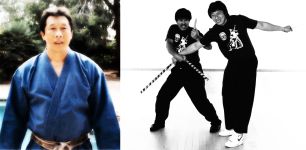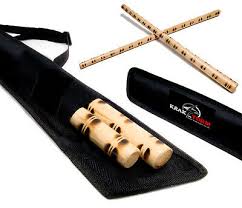The International Kali Arnis Escrima Federation provides valuable insight into the rich history and development of Filipino martial arts. Over the centuries, the martial arts in the Philippines evolved into a highly effective combat system influenced by various tribes and cultures. Some tribes specialized in specific stick-fighting ranges, such as long or short, and these skills were eventually combined to create a comprehensive and efficient martial art.
The three most well-known names for this martial art are Kali, Escrima, and Arnis. Kali, the oldest term, has its origin in Cebuano, a dialect of the middle island groups. “Ka” represents “camot” or “hand,” and “Li” stands for “lehok” or “movement.” Together, Kali translates to “movement of the hand,” and a practitioner of Kali is referred to as a Kallista.
Balintawak-Escrima
12 Strikes – Control – form training
12 Strikes – Full Power – form training
Shadow Fighting – form training
Footwork and empty hand padwork – Eight box method
12 Defence & Counter – Full control – Pairs work
12 Defence & Counter – Full power – Pairs work
Lifting & clearing – Pairs work
Empty Hand Manipulation – Disarms – pairs work

Escrima Kids
Level 1
1. Introduction to Stick and Movement Concepts
2. 12 Strikes – Control form
3 Blocking – Striking from the 12 point form (pairs work)
Level 2
1. Full Power form
2. Blocking – Striking from the form (pairs work)
3. Kuzushi footwork
4 Eight box method (Footwork and pad work)
Level 3
1. Shadow Fighting Form part one
2. Blocking – Striking from the form (pairs work)
3 Footwork and pad work drills
4 Eight Elbow form
Level 4
1 Shadow Fighting Form part one – part two
2 Tegumi (hand drills)
3 Blocking – Striking from the form (pairs work)
4 Free style
Level 5
1 Shadow Fighting Form part one – part two – part three
2 Blocking – Striking from the form (pairs work)
3 Disarms
4 Free style
A number of training pairs work drills can be included in class training sessions from each level
History of Eskrima
The Spanish occupiers named the Filipino martial arts “Escrima,” deriving from the Spanish word “Esgrima,” which describes a brief fight or fencing. This reflects the Spanish influence on the Philippines and their attempt to capture the essence of the martial arts practiced by the locals. These various names encompass the diversity and effectiveness of the Filipino martial arts, which have become renowned worldwide for their practicality and adaptability in combat situations.
